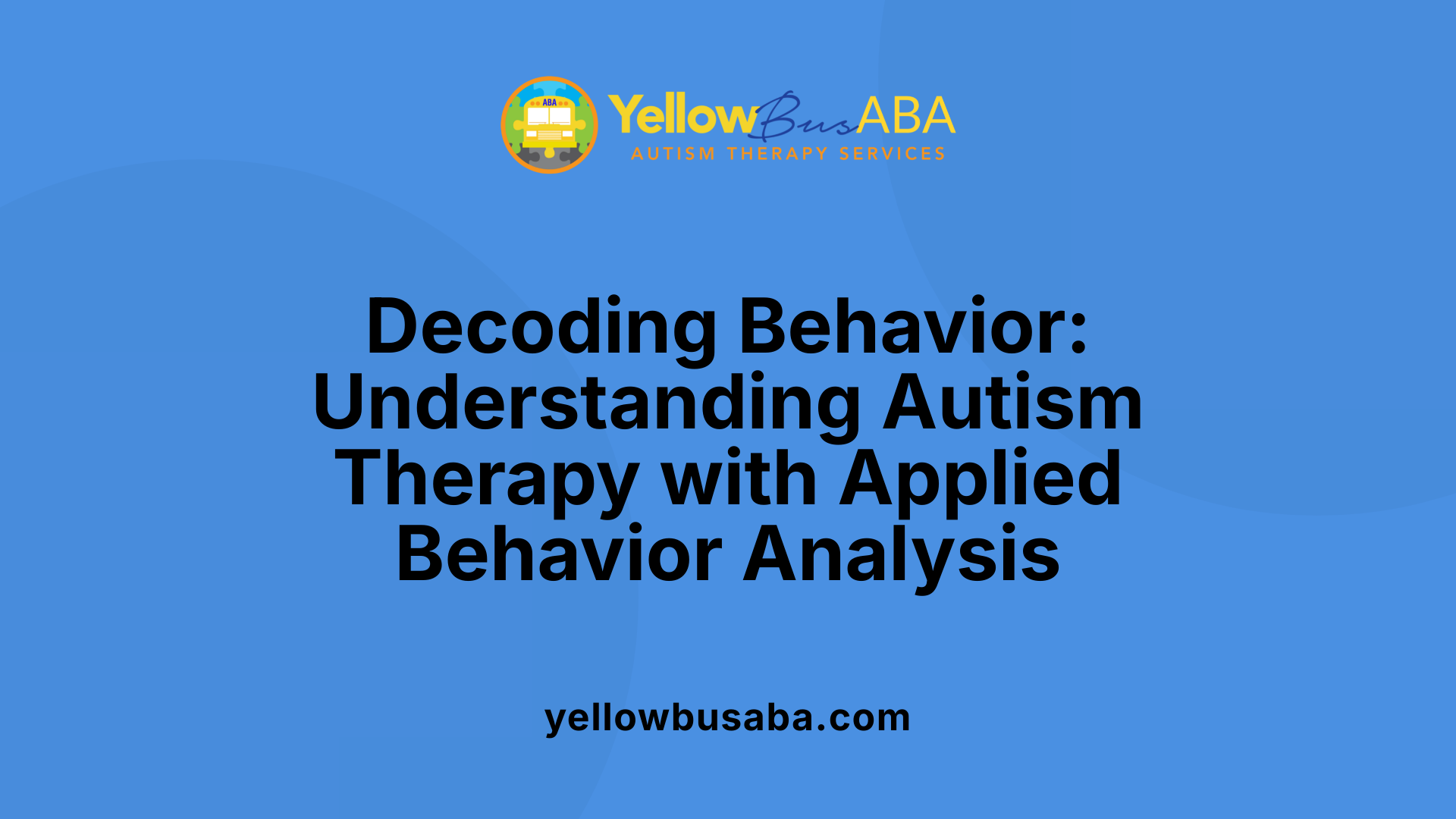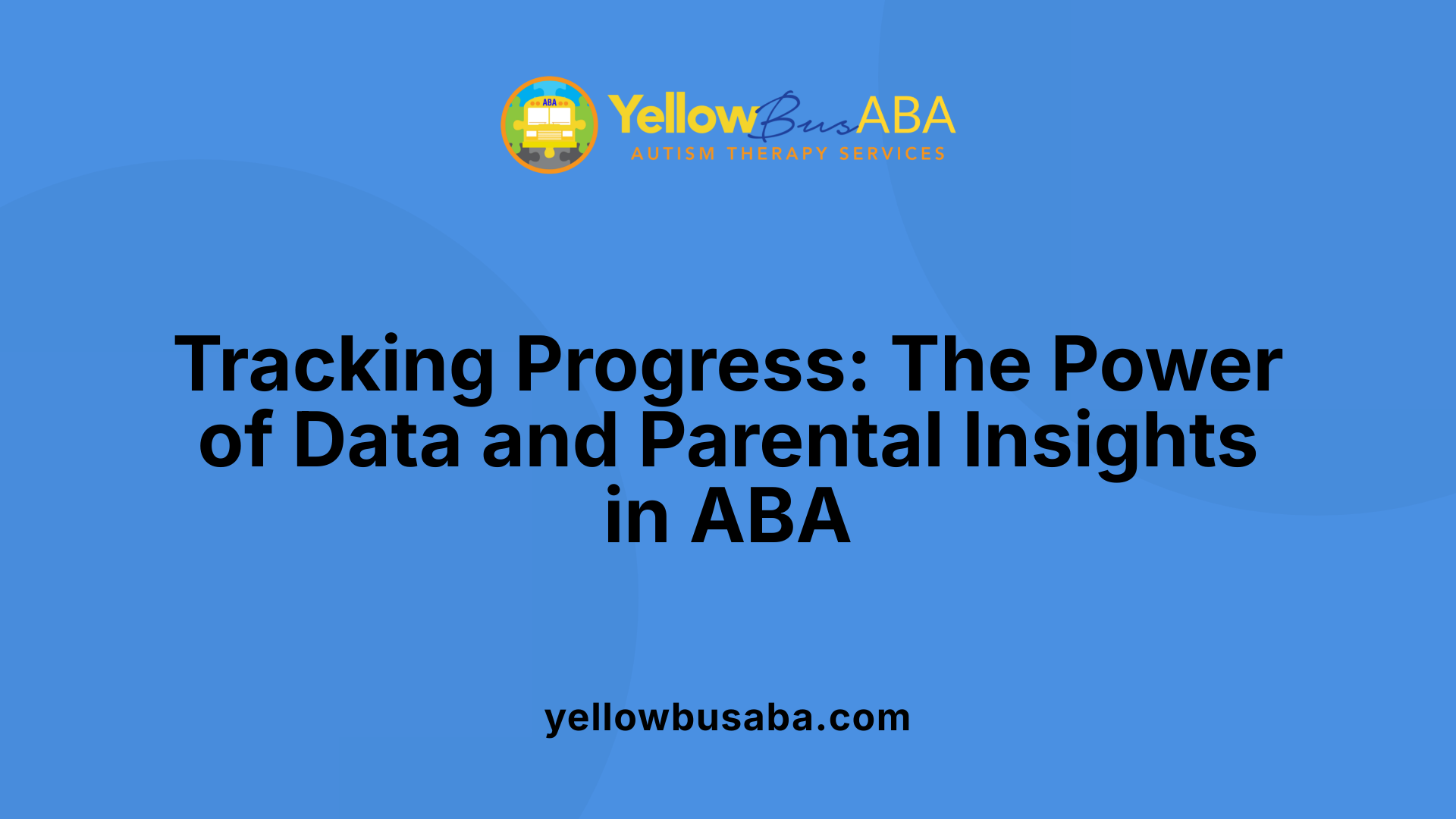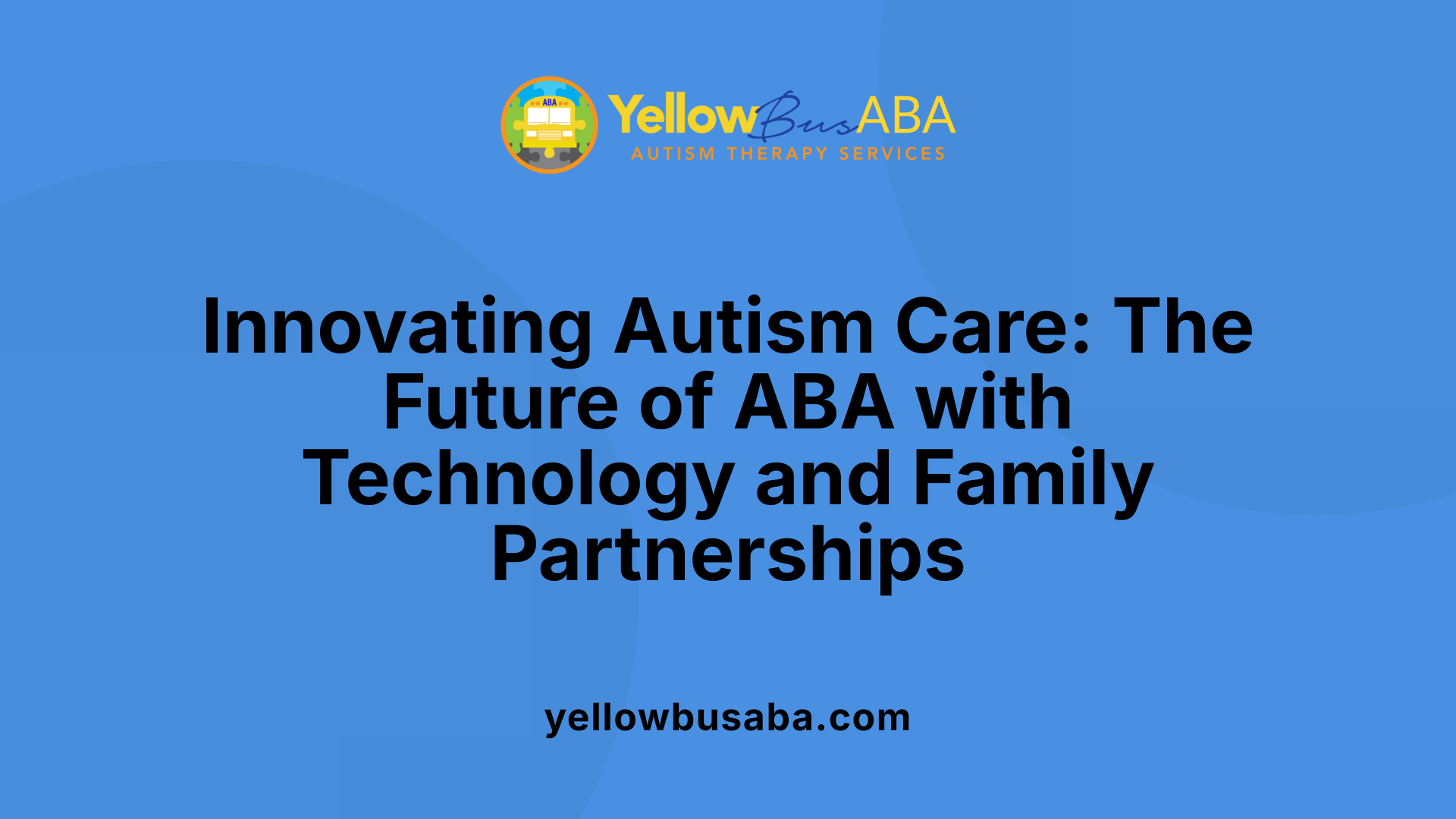The Crucial Role of Parents in Autism Behavioral Therapy
Applied Behavior Analysis (ABA) stands as a scientifically validated approach to supporting children with autism, focusing on shaping behavior through structured and personalized strategies. While therapists play a vital role, the active involvement of parents is increasingly recognized as a foundational pillar in the success of ABA therapy. This article explores how parents transition from bystanders to active collaborators, ultimately becoming the therapist’s greatest ally in fostering meaningful progress for their children.
Understanding Autism Therapy Based on Behavioral Analysis

What is autism therapy based on behavioral analysis?
Autism therapy based on behavioral analysis is primarily known as Applied Behavior Analysis (ABA). It is a structured, individualized treatment approach that uses scientific principles of behavior to improve social, communication, and daily living skills in children with autism.
ABA therapy is grounded in understanding the ABC framework: Antecedent, Behavior, Consequence. This means that therapists analyze what happens before a behavior, the behavior itself, and what follows it to motivate positive changes. Through this systematic approach, behaviors that support independence and social participation are encouraged, while disruptive behaviors are reduced.
How is ABA therapy carried out?
ABA therapy uses positive reinforcement to teach new skills and motivate behavior change. Rewards may include praise, toys, or preferred activities, which encourage children to repeat desired behaviors. Sessions are highly individualized, typically involving 20 to 40 hours per week over the course of 1 to 3 years, depending on the child's unique goals and progress.
Parental involvement plays a critical role, as parents receive training to apply ABA principles at home. This collaboration ensures skills learned during therapy generalize to everyday life and across settings.
What are the goals of ABA therapy?
The main goals of ABA therapy include:
- Enhancing communication abilities, both verbal and nonverbal
- Developing social skills for better interaction with peers and adults
- Teaching daily living skills to promote greater independence
- Reducing disruptive or challenging behaviors that interfere with learning or socialization
By targeting these areas, ABA therapy aims to help children with autism lead more fulfilling and engaged lives. The therapy is designed to build on each child's strengths, fostering meaningful growth through positive and respectful methods.
Who Provides Behavior Analysis Therapy and Their Role

Professionals Delivering ABA Therapy and Their Qualifications
Behavior analysis therapy for individuals with autism is primarily delivered by specialized professionals with training in behavioral science. Central to this team are Board Certified Behavior Analysts (BCBAs), who hold certification that confirms their expertise in designing and overseeing ABA programs. These professionals conduct detailed assessments, set individualized goals, and create systematic intervention plans based on ABA principles.
In addition to BCBAs, behavior therapists and clinicians with training in autism interventions carry out daily therapy sessions. These therapists use data-driven approaches, implementing strategies such as positive reinforcement within the structured ABA framework.
Role of Board Certified Behavior Analysts (BCBAs) and Therapists
BCBAs play a crucial leadership role, directing therapy plans and continuously evaluating the child's progress. They ensure that the interventions are customized and adapted over time to meet the child's evolving needs. Therapists provide hands-on therapy, interacting directly with children in one-on-one sessions to teach communication, social, and daily living skills.
Importantly, BCBAs and therapists work closely with families to involve parents in training and consistent strategy implementation, a collaboration that enhances the overall effectiveness of the therapy.
Overview of Specialized Companies Offering ABA Services
Beyond individual practitioners, many specialized companies offer comprehensive ABA therapy services. These companies often employ teams of BCBAs and therapists who deliver intensive programs, typically spanning 20 to 40 hours weekly.
Such organizations provide structured programs that include parent training, progress monitoring, and adaptable interventions. This integrated approach ensures that children receive consistent, evidence-based care aimed at maximizing their developmental growth.
Parental Involvement: A Cornerstone of Successful ABA Therapy

Why Are Parents Important in ABA Therapy?
Parents play a vital role in the success of Applied Behavior Analysis (ABA) therapy. Since ABA aims to teach communication, social, and daily living skills, consistent reinforcement outside therapy sessions helps solidify these lessons. Parents who actively apply ABA techniques at home enable children to generalize skills across multiple settings, making therapy outcomes more durable and meaningful.
How Does Parent Training Boost Therapy Effectiveness?
Parent training is an essential component of ABA therapy. Trained parents gain confidence and acquire the skills needed to reinforce strategies consistently. This training usually involves learning behavior modification methods such as positive reinforcement and using tools like token economies and visual schedules. Parents report feeling more empowered and less stressed, which enhances their engagement and leads to better results for their children.
What Insights Do Parents Provide?
Parents are invaluable informants on their child's unique strengths, preferences, and challenges. This knowledge helps therapists tailor goals and strategies specifically to the child's needs. Moreover, parental presence during therapy fosters a stronger therapeutic relationship and allows for real-time input, promoting adaptive adjustments and better coordination between therapists and families.
Collaborative Parent-Therapist Relationships Foster Better Outcomes

Communication, trust, and continuous feedback between parents and therapists
A successful ABA therapy experience hinges on open communication and mutual trust between parents and therapists. Establishing a strong collaborative partnership allows for ongoing feedback, ensuring that therapy remains aligned with the child's evolving needs. This open dialogue encourages shared decision-making and strengthens the overall effectiveness of the intervention.
Mutual goal setting and adapting therapy plans based on parent feedback
Parents play an essential role in shaping therapy goals. By contributing valuable insights into their child's preferences, strengths, and challenges, parents help tailor ABA plans that reflect real-world contexts and priorities. Therapists and parents work together to set achievable objectives and adapt strategies as needed, responding to progress and any emerging concerns.
Parental presence during sessions improves skill generalization
When parents participate actively in ABA sessions, children's progress often accelerates. Their involvement facilitates the generalization of learned skills across various environments, such as home and community settings. Parental presence also enhances the therapeutic relationship by building consistency and reinforcing positive behaviors beyond the therapy room.
Fostering collaboration through communication, trust, and shared goal setting empowers families and therapists alike to optimize the benefits of ABA therapy for children with autism.
Measuring Effectiveness: The Role of Data and Parental Insights

How is the effectiveness of behavioral analysis therapy for autism measured?
The effectiveness of Applied Behavior Analysis (ABA) therapy is gauged primarily through systematic data collection and the use of the Antecedent-Behavior-Consequence (A-B-C) framework. This method involves detailed observation and recording of what happens before a behavior (antecedent), the behavior itself, and the consequence that follows. These data provide a clear picture of how certain interventions, such as positive reinforcement, influence behavior change.
Therapists monitor progress by tracking improvements in skill areas like communication, social interaction, and daily living skills. Equally important is documenting reductions in disruptive or challenging behaviors. Regular analyses allow therapists to modify treatment plans promptly, ensuring they remain aligned with the child's evolving needs.
Parents contribute significantly by observing their child's behaviors in natural settings and sharing insights with therapists. They offer valuable information about preferences, strengths, and challenges that may not be evident during sessions. This collaborative approach helps in interpreting data accurately and tailoring the therapy to the child's unique profile.
Engaging parents in monitoring also increases the chance that learned skills generalize beyond the clinical environment, as parents reinforce strategies consistently at home. Their active involvement fosters a continuous feedback loop between home and therapy, which is crucial for measuring real-world effectiveness and supporting sustained improvements.
Indicators of therapy progress include:
- Enhanced communication and language abilities
- Improved social interactions and play skills
- Increased independence in daily tasks
- Decreases in repetitive or disruptive behaviors
By combining systematic data with parental insights, ABA therapy offers a robust framework for evaluating progress and ensuring interventions remain effective over time.
Empowering Parents Through Training and Support

How Does Parent Training in ABA Techniques Increase Confidence and Skills?
Parent training in Applied Behavior Analysis (ABA) equips caregivers with essential techniques such as positive reinforcement and behavioral modification strategies. This training moves parents beyond passive observers, allowing them to confidently engage with their child’s development by reinforcing desired behaviors at home. It provides them with the knowledge to understand their child's unique needs and challenges, fostering better communication and collaboration with therapists.
How Does Training Lead to Better Implementation and Lower Parental Stress?
Training enables parents to apply ABA strategies consistently, which enhances the overall effectiveness of therapy across different settings. When parents understand the principles and objectives of ABA, they experience less frustration and confusion during intervention. Studies reveal that parents who receive ABA training report lower stress levels, higher satisfaction with therapy programs, and are more likely to maintain consistency in implementing techniques, thereby supporting sustained progress.
In What Ways Do Parents Gain a Sense of Control and Empowerment in Their Child’s Development?
Participating in ABA training empowers parents by giving them tools to actively influence their child’s growth. A study involving 22 parents showed that those trained felt more in control and capable of managing their child’s developmental needs. This empowerment stems from increased confidence in their skills and the ability to notice and celebrate small gains, which strengthens their motivation to stay engaged. Furthermore, this proactive role enhances the parent-child relationship and encourages successful skill generalization beyond therapy sessions.
Early Identification and Parent-Led Intervention Impact

What are the main goals of autism therapy based on behavior analysis?
ABA therapy focuses on teaching essential skills such as communication, social interactions, and daily living abilities. It strives to reduce disruptive behaviors through positive reinforcement and structured methods. This approach helps children with autism achieve greater independence and apply learned skills in various settings.
Significance of early autism assessment and starting therapy promptly
Early identification of autism is crucial for effective intervention. Starting ABA therapy as soon as possible can greatly improve communication and social skills while reducing challenging behaviors. Early therapy maximizes benefit due to the brain’s heightened adaptability at younger ages, allowing for better developmental progress.
Parent participation reinforces early intervention benefits
Parental involvement plays a pivotal role in ABA therapy’s success. Parents receive training to apply therapy techniques at home, creating consistent learning opportunities. Their engagement helps generalize skills across environments and strengthens the child-therapist relationship. Training also boosts parents’ confidence and satisfaction, which further supports therapy outcomes.
Disparities in early diagnosis emphasizing need for support
Unfortunately, disparities exist in early autism diagnosis, especially in lower-income communities, limiting timely access to ABA and other interventions. Addressing these gaps is essential to ensure all children benefit from early, parent-supported therapy. Enhanced awareness, improved screening, and accessible resources can help reduce these disparities, promoting equitable outcomes for children with autism.
The Future of ABA: Integrating Technology and Family Support

Emerging technology-enhanced ABA strategies and AI applications
In recent years, technology has started playing a transformative role in Applied Behavior Analysis (ABA) therapy for autism. AI-powered interventions, for example, can customize behavioral modification techniques in real-time according to each child's unique responses. These technology-enhanced strategies help therapists analyze patterns efficiently, adapt therapy plans promptly, and predict potential challenges before they escalate. The integration of AI is broadening ABA therapy's reach and effectiveness.
Support tools for parents to monitor and apply interventions
Parents are now equipped with various technology-based tools designed to assist in monitoring their child's progress and applying ABA strategies consistently. Digital applications can track behavioral changes, provide reminders for intervention tasks, and offer interactive tutorials to reinforce learning. These tools empower parents to reinforce desired behaviors at home, maintain consistent therapy routines, and communicate progress effectively with therapists.
How technology complements parental involvement and therapist guidance
Technology acts as a bridge enhancing collaboration between families and therapists. By delivering real-time feedback and progress reports, it ensures parents remain informed and confident in their role. This synergy supports parental training by supplementing traditional methods with accessible, practical resources. Ultimately, the combination of technological support and active parental involvement strengthens therapy outcomes, enabling children to generalize skills across environments more successfully.
Parents: The Unsung Heroes in Autism Therapy Success
The journey through autism therapy is complex and demanding, yet it is profoundly enriched when parents become active, trained, and collaborative participants. As this narrative has shown, ABA therapy’s success is deeply intertwined with parental engagement, which fosters a consistent and supportive environment that bridges clinical sessions and daily life. Empowered through training and guided by skilled therapists, parents translate therapeutic techniques into meaningful progress that lasts beyond the therapy room. Investing in parental partnership not only enhances the effectiveness of behavioral interventions but also uplifts family well-being, creating a foundation for lasting growth and independence for children with autism.
References
- What Parents Need to Know About ABA Therapy for Autism
- Do Parents Stay in ABA Therapy?
- How to Encourage Parental Involvement and Boost the ...
- Understanding the Role of Parental Involvement in Autism ...
- Applied Behavior Analysis (ABA)
- How to Measure ABA Therapy's Effectiveness
- Treatment and Intervention for Autism Spectrum Disorder
- Behavioral Therapy for Autism Spectrum Disorder in Children
- Applied Behavior Analysis (ABA)
- ABA Therapy Goals: 25 Practical Examples & Timelines



.jpg)

.avif)
